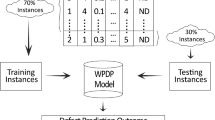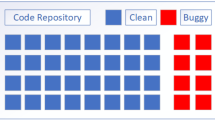Abstract
Cross-project software defect prediction (CPSDP) is an excessive way to enhance test performance and ensure software reliability. The CPSDP allows developers to allocate limited resources to identify errors and prioritize testing efforts. Predicting earlier defects is a convenient operation that decreases software testing time and costs. CPSDP is difficult because predictors built into raw materials rarely generalize to the target projects. However, there are more perfect events in a real software program than defective ones, which results in severe class distribution bias and poor assortment performance. The existing method does not consider the relational features in the software required to create accurate prediction models. This paper presents soft-max multilayer adversarial neural network (SMAN2) and spider optimization mutual feature selection (SOMFS) algorithm to address this problem. First, a Z-score normalization filter is used to prepare a dataset, like checking missing values and changing them into normalized data. Then, we use the SOMFS technique to choose the finest attributes from the normalized software dataset to reduce the dimensionality. Later, dimensionality reduced dataset trained into the proposed SMAN2 algorithm analyses software defects. Concerning parameters, precision, recall, classification performance, and F1-score performance indicators find that the proposed SMAN2 algorithm performs better than the previous methods.







Similar content being viewed by others
Data Availability
The dataset generated and analyzed during the current study are available from the corresponding author on reasonable request.
References
Tang S, Huang S, Zheng C, Liu E, Zong C, Ding Y. A novel cross-project software defect prediction algorithm based on transfer learning. Tsinghua Sci Technol. 2022;27(1):41–57. https://doi.org/10.26599/TST.2020.9010040.
Cai Z, Lu L, Qiu S. An abstract syntax tree encoding method for cross-project defect prediction. IEEE Access. 2019;7:170844–53. https://doi.org/10.1109/ACCESS.2019.2953696.
Chen D, Chen X, Li H, **e J, Mu Y. DeepCPDP: deep learning based cross-project defect prediction. IEEE Access. 2019;7:184832–48. https://doi.org/10.1109/ACCESS.2019.2961129.
Lin J, Lu L. Semantic feature learning via dual sequences for defect prediction. IEEE Access. 2021;9:13112–24. https://doi.org/10.1109/ACCESS.2021.3051957.
Šikić L, Kurdija AS, Vladimir K, Šilić M. Graph neural network for source code defect prediction. IEEE Access. 2022;10:10402–15. https://doi.org/10.1109/ACCESS.2022.3144598.
Ni C, Liu W, Gu Q, Chen X, Chen D. FeSCH: a feature selection method using clusters of hybrid-data for cross-project defect prediction. 2017 IEEE 41st annual computer software and applications conference (COMPSAC), 2017, pp. 51–56, https://doi.org/10.1109/COMPSAC.2017.127.
Zhang J, Wu J, Chen C, Zheng Z, Lyu MR. CDS: a cross-version software defect prediction model with data selection. IEEE Access. 2020;8:110059–72. https://doi.org/10.1109/ACCESS.2020.3001440.
Huang S, Wu Y, Ji H, Bai C. A three-stage defect prediction model for cross-project defect prediction. 2017 International conference on dependable systems and their applications (DSA), 2017, pp. 169–169, https://doi.org/10.1109/DSA.2017.39.
Wu F, et al. Cross-project and within-project semisupervised software defect prediction: a unified approach. IEEE Trans Reliab. 2018;67(2):581–97. https://doi.org/10.1109/TR.2018.2804922.
Gong L, Jiang S, Bo L, Jiang L, Qian J. A novel class-imbalance learning approach for both within-project and cross-project defect prediction. IEEE Trans Reliab. 2020;69(1):40–54. https://doi.org/10.1109/TR.2019.2895462.
Li Y, Huang Z, Wang Y, Fang B. Evaluating data filter on cross-project defect prediction: comparison and improvements. IEEE Access. 2017;5:25646–56. https://doi.org/10.1109/ACCESS.2017.2771460.
Lin D, Tantithamthavorn C, Hassan AE. The impact of data merging on the interpretation of cross-project just-in-time defect models. In IEEE transactions on software engineering. https://doi.org/10.1109/TSE.2021.3073920.
Yuan Z, Chen X, Cui Z, Mu Y. ALTRA: cross-project software defect prediction via active learning and tradaboost. IEEE Access. 2020;8:30037–49. https://doi.org/10.1109/ACCESS.2020.2972644.
**a X, Lo D, Pan SJ, Nagappan N, Wang X. HYDRA: massively compositional model for cross-project defect prediction. IEEE Trans Softw Eng. 2016;42(10):977–98. https://doi.org/10.1109/TSE.2016.2543218.
Sheng L, Lu L, Lin J. An adversarial discriminative convolutional neural network for cross-project defect prediction. IEEE Access. 2020;8:55241–53. https://doi.org/10.1109/ACCESS.2020.2981869.
Tong H, Liu B, Wang S. Kernel spectral embedding transfer ensemble for heterogeneous defect prediction. IEEE Trans Softw Eng. 2021;47(9):1886–906. https://doi.org/10.1109/TSE.2019.2939303.
Yang X, Wen W. Ridge and Lasso regression models for cross-version defect prediction. IEEE Trans Reliab. 2018;67(3):885–96. https://doi.org/10.1109/TR.2018.2847353.
Li J, He P, Zhu J, Lyu MR. Software defect prediction via convolutional neural network. 2017 IEEE international conference on software quality, reliability and security (QRS), 2017, pp. 318–328, https://doi.org/10.1109/QRS.2017.42.
Liang H, Yu Y, Jiang L, **e Z. Seml: a semantic LSTM model for software defect prediction. IEEE Access. 2019;7:83812–24. https://doi.org/10.1109/ACCESS.2019.2925313.
Pan C, Lu M, Xu B, Gao H. An improved CNN model for within-project software defect prediction. Appl Sci. 2019;9(10):2138. https://doi.org/10.3390/app9102138.
Funding
No funding is received for this research.
Author information
Authors and Affiliations
Corresponding author
Ethics declarations
Conflict of Interest
The authors declare that they do not have any conflict of interest.
Additional information
Publisher's Note
Springer Nature remains neutral with regard to jurisdictional claims in published maps and institutional affiliations.
This article is part of the topical collection “Advances in Computational Approaches for Image Processing, Wireless Networks, Cloud Applications and Network Security” guest edited by P. Raviraj, Maode Ma, and Roopashree H R.
Rights and permissions
Springer Nature or its licensor (e.g. a society or other partner) holds exclusive rights to this article under a publishing agreement with the author(s) or other rightsholder(s); author self-archiving of the accepted manuscript version of this article is solely governed by the terms of such publishing agreement and applicable law.
About this article
Cite this article
Ruckmani, V., Prakasam, S. SMAN2: Soft-Max Multilayer Adversarial Neural Network-Based Cross-Project Software Defect Prediction. SN COMPUT. SCI. 4, 780 (2023). https://doi.org/10.1007/s42979-023-02224-y
Received:
Accepted:
Published:
DOI: https://doi.org/10.1007/s42979-023-02224-y




